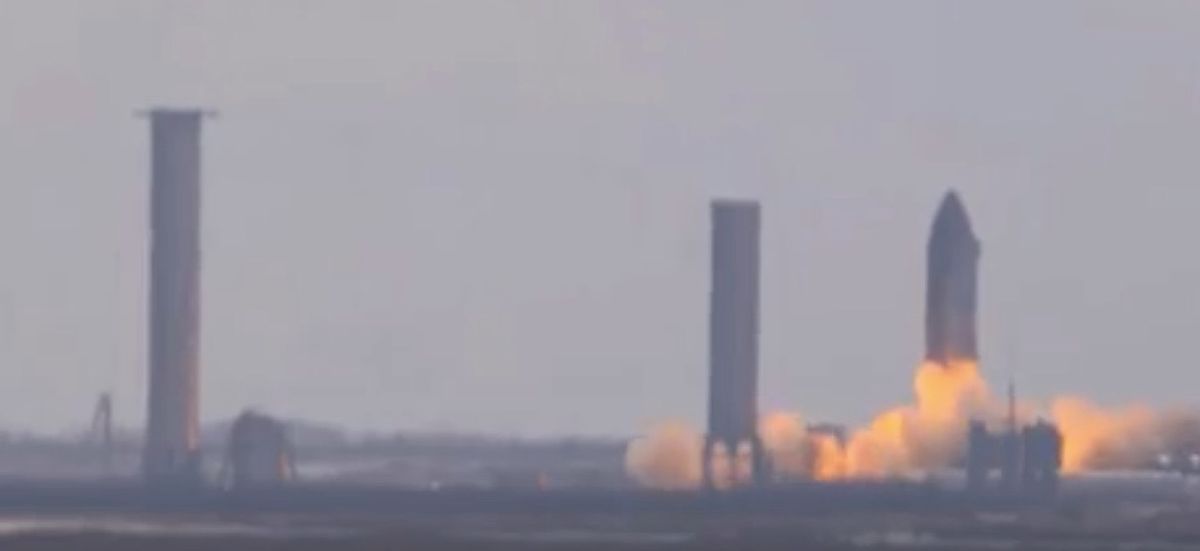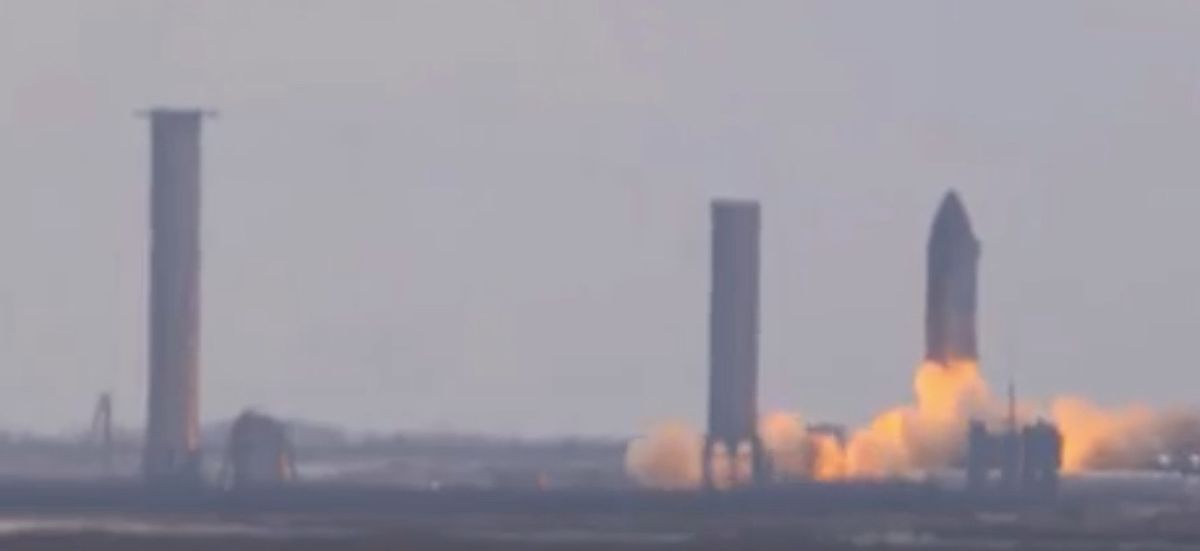
SpaceX’s latest Starship prototype has breathed fire again.
The Starship SN20 vehicle performed a “static fire” test on Wednesday (Dec. 29) at the company’s Starbase site in South Texas, briefly igniting its Raptor engines while remaining anchored to the ground.
The trial continued the launch-prep campaign for SN20 (“Serial No. 20”), which is scheduled to conduct the Starship program’s first-ever orbital test flight in the coming months. That landmark liftoff had been targeted for January or February, but it’ll now take place no sooner than early March because the U.S. Federal Aviation Administration just pushed the estimated completion date of a required Starbase environmental review from Dec. 31 to Feb. 28.
Photos: SpaceX lifts huge Super Heavy rocket onto launch stand
STATIC FIRE! Ship 20 comes to life again, with a Static Fire test after a very smooth countdown. View from Mary (@BocaChicaGal) and Bots.➡️https://t.co/xpNCvgFmCo pic.twitter.com/VzGwLUw1gIDecember 29, 2021
SN20 has performed static fires before. The vehicle lit up all six of its Raptors on Nov. 12, for example. Wednesday’s test, which NASASpaceflight streamed live, may have involved all six engines as well, though SpaceX has yet to confirm that.
SpaceX is developing Starship to take people and cargo to the moon, Mars and beyond. The vehicle consists of two elements, both of which are designed to be fully and rapidly reusable: a huge first-stage booster called Super Heavy and a big spacecraft known as Starship.
Starship prototypes have flown before, but only on short jaunts that reached maximum altitudes of around 6.2 miles (10 kilometers). Those previous launches involved Starship vehicles with no more than three Raptors, and none of them lifted off atop a Super Heavy booster.
Related stories:
The upcoming orbital flight will see SN20 fly atop a Super Heavy called Booster 4, which sports 29 Raptors of its own. If all goes according to plan, Booster 4 will splash down in the Gulf of Mexico shortly after liftoff and SN20 will make it all the way to orbit, eventually performing a splashdown of its own near the Hawaiian island of Kauai.
More test flights will likely follow in quick succession, for SpaceX aims to get Starship up and running relatively soon. NASA chose Starship as the first crewed lander for its Artemis program, which aims to put people on the moon in the middle of the decade.
And Japanese billionaire Yusaku Maezawa, who recently returned from a 12-day stay aboard the International Space Station, booked a round-the-moon trip on Starship, with launch targeted for 2023.
Mike Wall is the author of “Out There” (Grand Central Publishing, 2018; illustrated by Karl Tate), a book about the search for alien life. Follow him on Twitter @michaeldwall. Follow us on Twitter @Spacedotcom or on Facebook.



